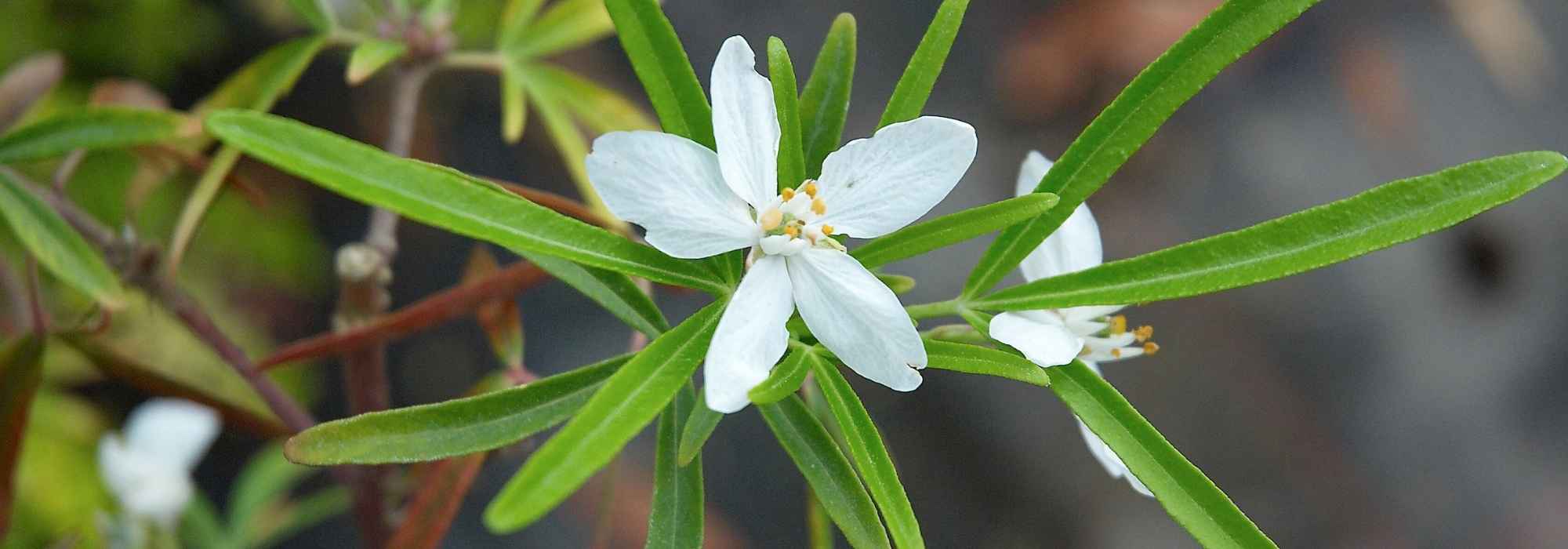
What can be planted on an east-facing terrace?
Our selection of perennials, shrubs and grasses
Contents
An east-facing terrace receives morning sun and, depending on building height and surroundings — wooded or urban — can get more or less light and warmth into early afternoon in summer. Plants therefore enjoy gentle warmth there, but suffer sharply from severe periods of morning frost and thaw in winter. It is therefore advisable to install sufficiently hardy plants, generally in partial shade, with a majority of evergreen plants since they provide a view from the house. Ideally it will consist of pots of perennials, grasses and bushes with bright foliage or showy flowering, with some differences between the North and South of France.
Here are some plant ideas that thrive in this exposure, which presents a few constraints, and will brighten your terrace in almost every season!
→ Discover also our selection of dwarf shrubs to grow in pots on an east-facing balcony
Perennials
In a container on an east-facing terrace, prefer evergreen plants or those with staggered seasonal interest :
Horsetail
Extremely hardy, horsetail (Equisetum japonicum) thrives in a pot on a terrace, where it brings a very contemporary feel thanks to its upright, modern silhouette. It tolerates both sun and partial shade, which makes an east-facing terrace well suited to its growth. Plant it in a large pot without drainage holes to keep constant moisture and the saturated substrate it needs to grow well. Pot culture is also an excellent way to control its running rootstock. I recommend a fairly tall container to emphasise its verticality: a dark, graphic-design planter or, conversely, a vintage one such as a zinc washtub will showcase this atypical, evergreen display of green stems striate with black. Invite it onto a contemporary or exotic terrace!
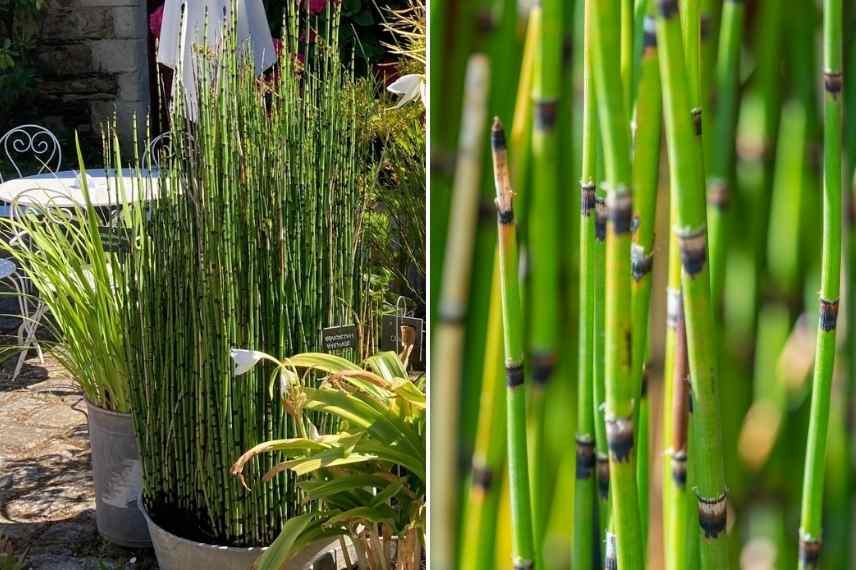
Horsetail in a pot on the terrace (© Gwenaëlle Authier David), and close-up of the extraordinary graphic of this semi-aquatic perennial
→ Discover our full fact sheet on Horsetail
Hostas
Hostas, magnificent shade or part-shade perennials, are easy to grow in pots and feel very at home on an east-facing terrace: receiving only morning sun, they will be comfortable in much of the country, except in southern regions where this is less advisable. The great advantage of planting them on a terrace is not only being able to enjoy their highly ornamental foliage and plant them together for a lush, massed effect, but also protecting them from slugs and snails that often devastate tender leaves in the garden when they are elevated.
Among the countless varieties, I suggest choosing greens in different shades and sizes to combine them: for example the variegated Hosta sieboldiana ‘Frances Williams’, the Hosta ‘Honeybells’ with its bright green tones and uncommon, delightful white flowers for the genus, and a blue-toned hosta such as the classic and superb ‘Alcyon’. Hostas enter dormancy from November onwards, so add a few other perennials such as oriental hellebores with evergreen foliage to take over quickly, avoiding large gaps on your terrace in winter, or some evergreen ferns.
They will suit many terrace styles — classic, exotic, and contemporary.
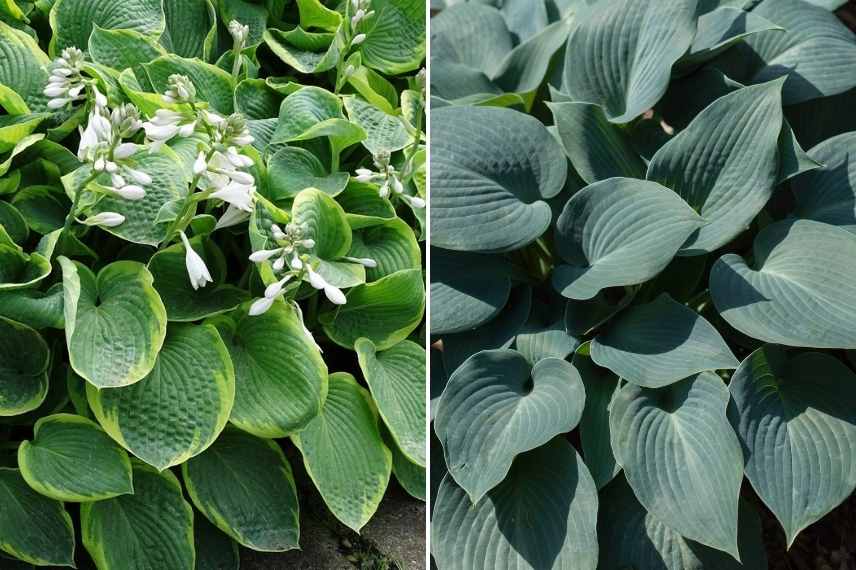
Hosta ‘Frances Williams’ and Hosta sieboldina ‘Alcyon’
→ Discover our full fact sheet on Hostas and our advice on growing Hostas in pots
Hardy geraniums
Hardy geraniums make beautiful containers on a terrace that receives reduced light and heat in the afternoon. They will adapt perfectly to these conditions and develop a very long flowering period. Many hardy geraniums keep their foliage for much of the year, so you can also include an evergreen presence on your terrace. Play with their colours, and, for example, plant the famous geranium ‘Rozanne’ in a glossy blue pot — guaranteed impact! Lower varieties will form lovely cushions, while taller ones will drape over the edges of your tubs or planters.
To accompany these very natural-style containers, choose airy plants such as lady’s mantle, Japanese anemones and Thalictrum to bring delicate late-season flowers and subtle verticality, or Vinca for their persistence and spring flowering, etc.

Hardy geranium ‘Rozanne’
→ Discover our selection of hardy geraniums with long flowering
Shrubs
The choice is fairly wide, with, for example, a range of heather-soil plants that readily tolerate morning sun: compact bushes that are ornamental either for their foliage or for their flowering.
Choisya ‘Aztec Gold’
Among great qualities of the Choisya, or Mexican orange blossom, its ability to grow in a variety of exposures is one of the most interesting. It thrives on an east-facing terrace provided it is given a pot large enough to allow it to fully develop. Hardy, it can grow almost anywhere but will flower all the better in a mild climate or warm region where it receives enough sun. Some compact varieties such as ‘Aztec Pearl’, ‘Aztec Gold’ and ‘White Dazzler’, whose leaves are narrow, are particularly ornamental and very suitable: you will enjoy not only a pretty rounded habit, distinctive evergreen foliage (particularly bright for ‘Aztec Gold’), but also a delicate white flowering in April–May, with intense orange-blossom fragrance. Choisya ‘Aztec Gold’ lends itself well to an exotic-looking terrace… extend that feeling with a Fatsia japonica, also evergreen, or with another very ornamental (deciduous) foliage such as Sorbaria sorbifolia ‘Sem’.
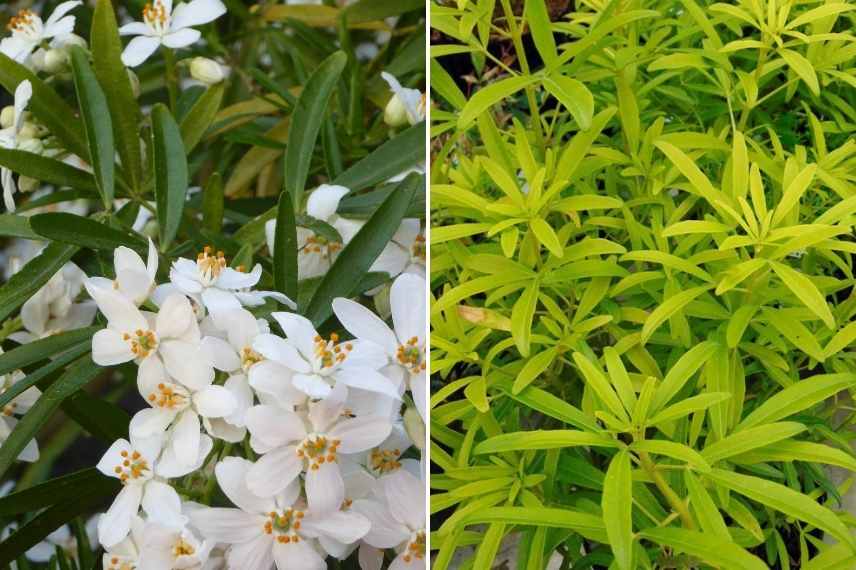
Choisya ‘Aztec Pearl’ and ‘Aztec Gold’
Kalmia
Also called mountain laurels, Kalmias belong to little-known heather-soil bushes, yet they offer many assets as evergreen bushes: they often remain small to medium in size, allowing them to be installed almost anywhere, provide a flowering in pink or white tones absolutely delightful in spring, are particularly hardy, and tolerate partial sun… They are perfect candidates for an east-facing terrace! With foliage more or less elongated depending on species (Kalmias latifolia or angustifolia) they form delightful small bushy bushes. Note that, being slow-growing, they are ideal in pots, but you will need to wait a few years before they reach adult size, often 1.50 m in a pot. As acid-soil bushes, provide at planting a substrate enriched with turf or heather soil. You can accompany a potted subject with other ericaceous plants, such as an azalea or a dwarf rhododendron (Rhododendron yakushimanum ‘Grumpy’ or ‘Golden Torch’), or a compact Skimmia.

Kalmias are delightful evergreen bushes to place in pots on the terrace
Hydrangeas involucrata, arborescens or paniculata
Hydrangeas are bushes that receive enough morning light on an east-facing exposure and, being very hardy, do not fear winter cold in that position.
The Hydrangeas involucrata, compact, are therefore well suited to terrace planting: with their peony-shaped buds and downy foliage, they have enormous charm. Note that they tend to flower rather in late summer. Variety ‘Yoraku Tama’, 1.20 m at maturity, is enchanting for lovers of soft pink inflorescences.
Species that leaf out late in spring, such as arborescens or paniculata, are also particularly suitable, not fearing late frosts, which can be sudden on east exposures. They flower all summer. They are magnificent in a large container, providing medium height and great elegance, such as the very popular Hydrangea arborescens ‘Annabelle’ or a Hydrangea paniculata ‘Pastelgreen’. If building is high or there is slightly more shade, panicles will simply colour a little less in autumn where varieties redden, or remain slightly green for varieties such as ‘Annabelle’.
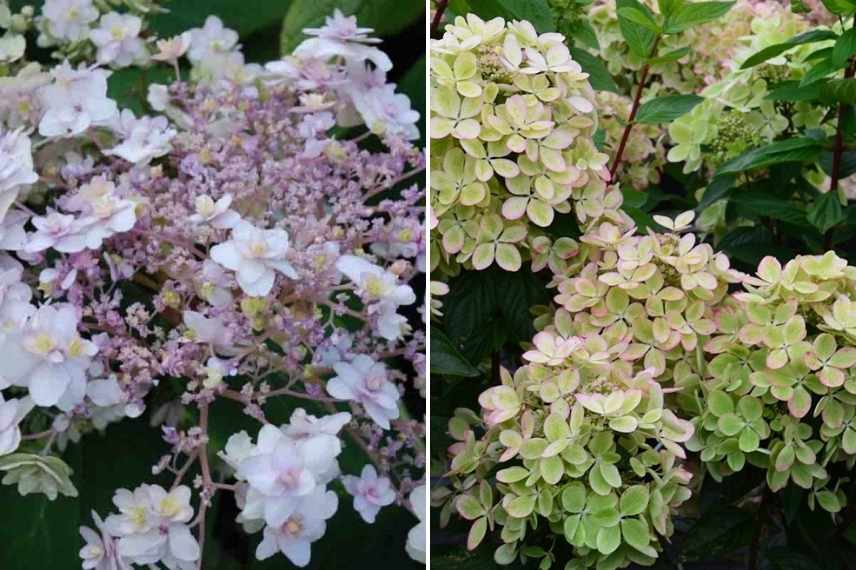
Hydrangea involucrata ‘Yoraku Tama’ and Hydrangea paniculata ‘Pastelgreen’
Nandina domestica ‘Lemon Lime’
You may want to brighten the terrace with attractive evergreen foliage to provide year-round volume and structure, and you would be right! Nandinas are perfect for use on an east-facing terrace: they readily accept partial sun during the day and are very hardy. Among many noteworthy varieties, ‘Lemon Lime’ is notable for ultra-bright foliage in a particularly attractive lime-yellow colour, which brightens the terrace when it is no longer in sun. It forms a compact, dense bush, slow-growing like all Sacred Bamboos, reaching 1 m in all directions at maturity. You can accompany it with one or two other decorative bushes, such as Berberis thunbergii ‘Natasza’, surprisingly variegated with vivid pink and cream, or more classically with a neat box ball or a Lonicera nitida ‘Elegant’ clipped as topiary.
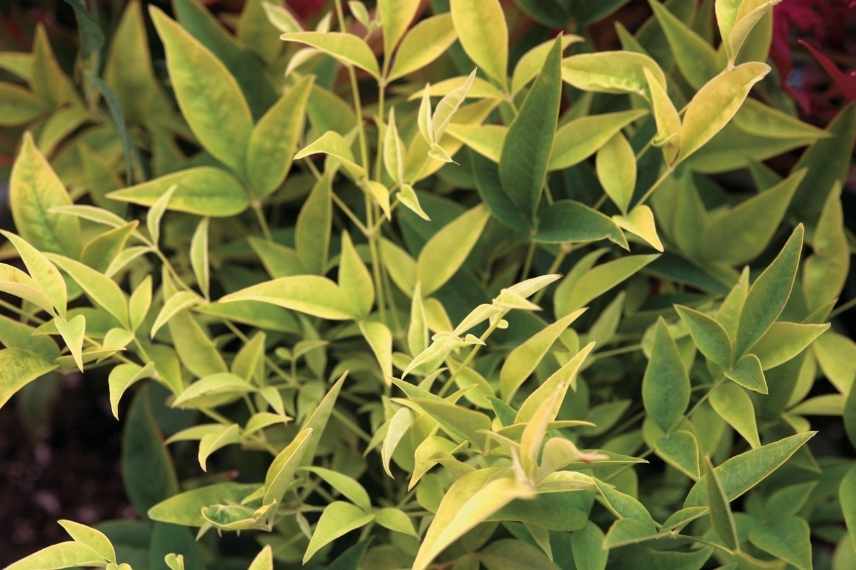
Nandina domestica ‘Lemon Lime’
Discover other Patio shrubs
View all →Available in 1 sizes
Available in 1 sizes
Available in 0 sizes
Available in 0 sizes
Available in 0 sizes
Available in 0 sizes
Available in 0 sizes
Available in 0 sizes
Available in 0 sizes
Grasses
Carex
Here are plants – not really grasses but often considered as such – remaining small to medium-sized, adapting wonderfully to pots and to well-lit but shaded situations. As sedges (their other name) are most often evergreen, and display a wide range of colours, from green to orange via blue, variegated or solid, they are used to bring style and dynamism to a terrace. With their upright yet flexible clumps, forming attractive cushions, they are highly graphic, and blend really well with all types of plants, which they particularly set off.
Among the most ornamental varieties for pots: ‘Evergold’ and ‘Everest‘ broadly striate with cream, oshimensis ‘Evergreen’ bright green, oshimensis ‘Everillo’ chartreuse, or coppery ‘Buchananii’.
→ Discover our full guide on Carex and How to choose among Carex?
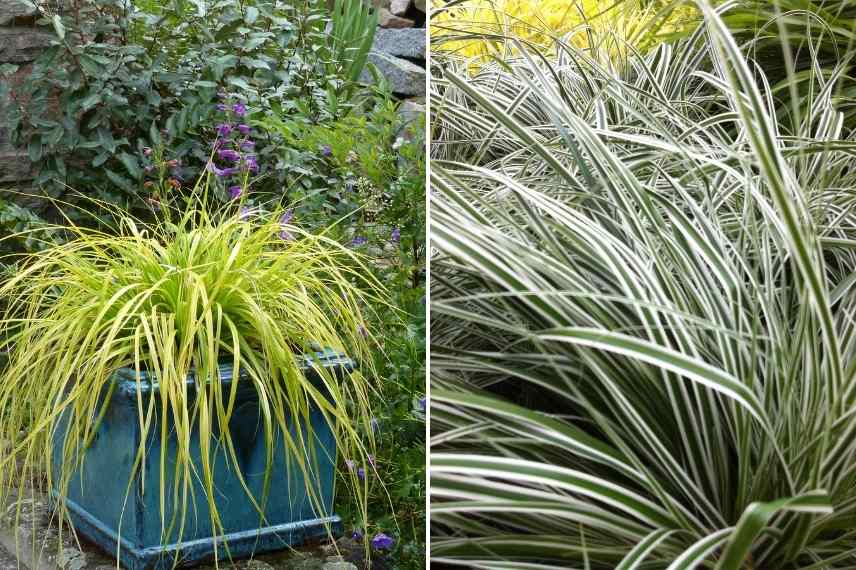
Carex oshimensis ‘Everillo’ and Carex oshimensis ‘Everest’
Ophiopogon
To conclude this plant suggestion, I cannot recommend Ophiopogon enough, or snake beard, a remarkable perennial often planted at the edge of borders, or in a Japanese-style understorey. Like its friend Carex, I mention it here among the ornamental grasses, because it is often assimilated there (although it belongs to Liliaceae), but one must admit its superb slender linear foliage makes it strongly resemble them. Ophiopogon, originating from Japan and Korea, is not afraid of cold, and thrives in sunny but also semi-shaded situations. Its low dimensions make it suitable for container culture, where it brings, especially with its dark varieties, superb contrasts with taller plants: insert an Ophiopogon ‘Hosoba Kokuryu’ or the classic Ophiopogon planiscapus ‘Nigrescens’ into your compositions of annual or perennial plants with Campanulas or a fine Geranium phaeum, and alongside a golden Carex, the effect is superb.
Its only drawback: it grows slowly, and you will just need to be patient before attractive clumps form…
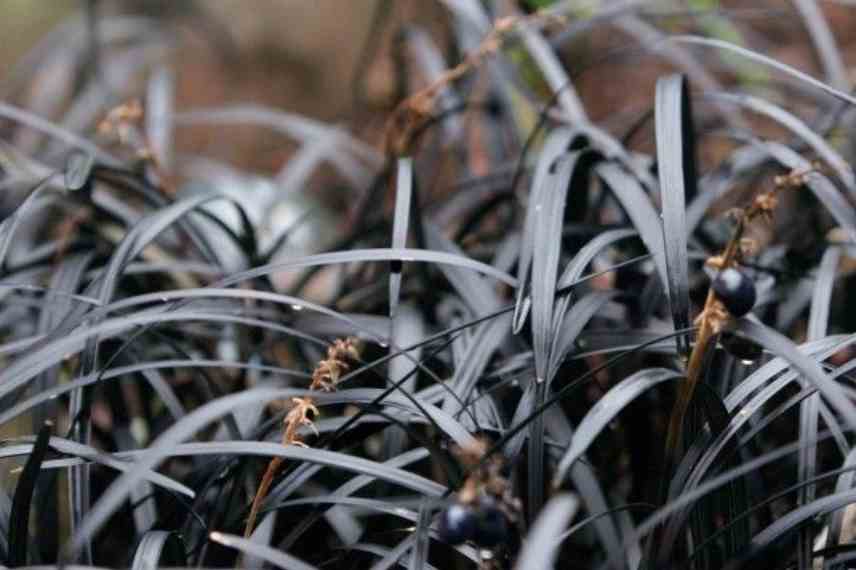
Ophiopogon planiscapus ‘Nigrescens’
→ Discover our full guide on Ophiopogons
To go further
Also discover our ideas for enhancing a terrace:
- north-facing: What can be planted on a north-facing terrace?
- south-facing: What can be planted on a south-facing terrace?
- Subscribe!
- Contents
































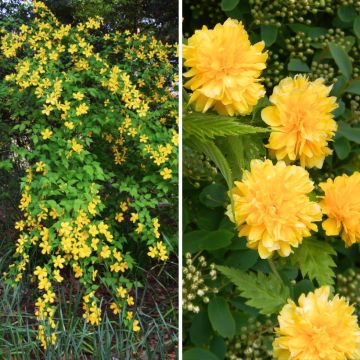
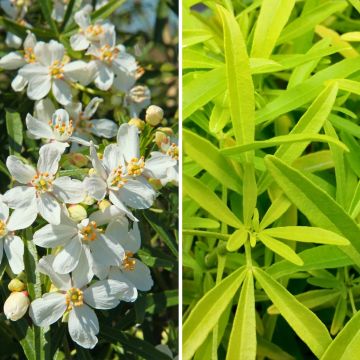

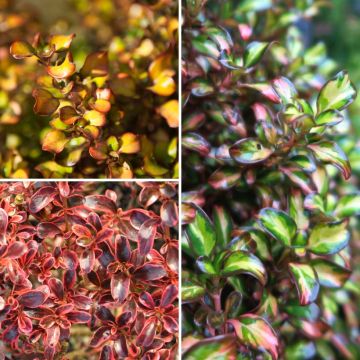
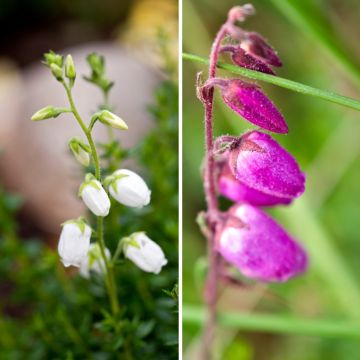
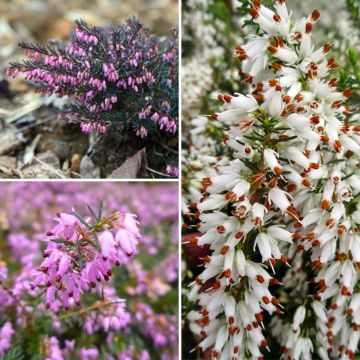
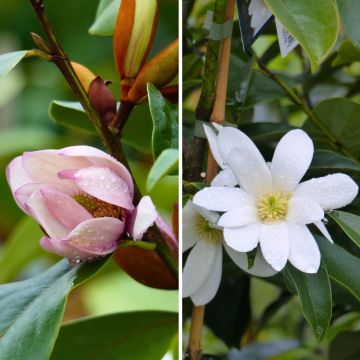
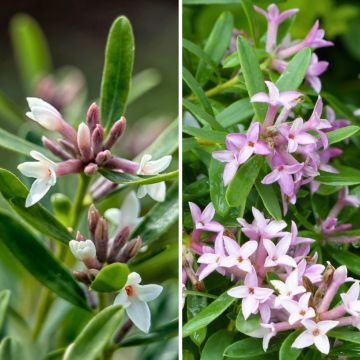
Comments